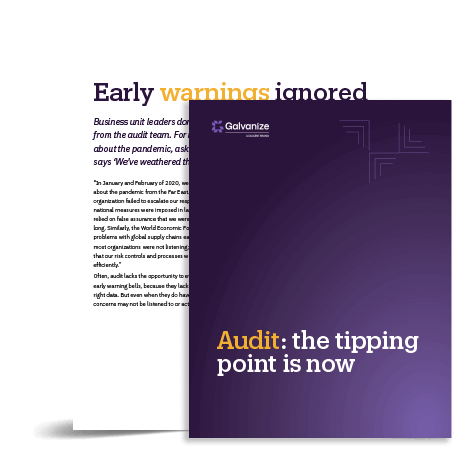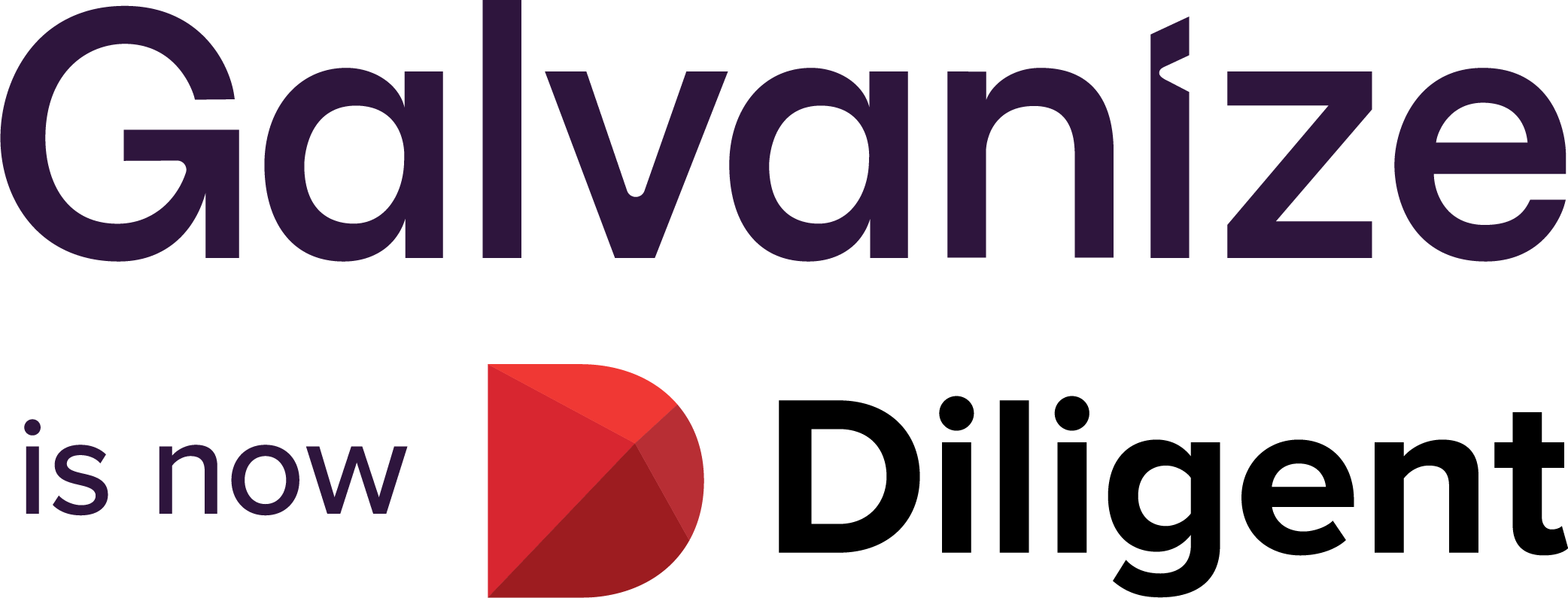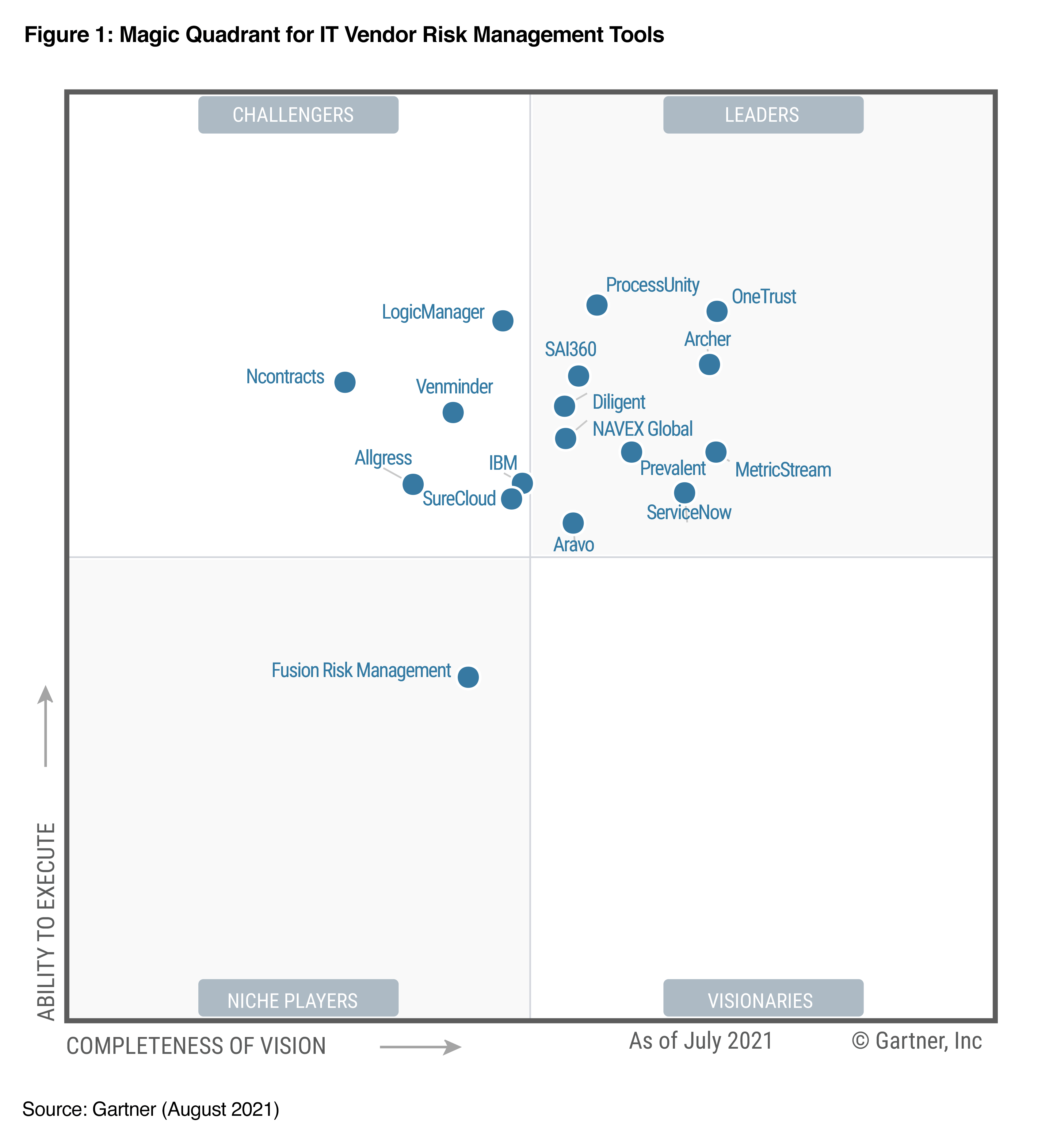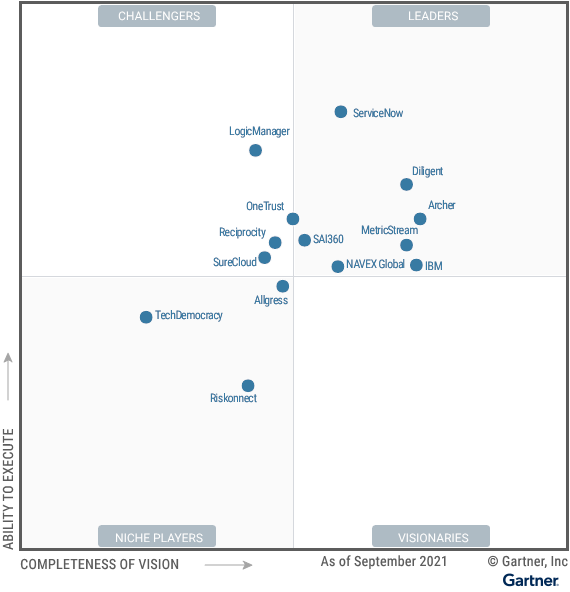When it comes to risk management and compliance, most organizations operate on a 3 Lines of Defense (3LOD) model, in which operational management, compliance, and internal audit work together in tandem to assess and mitigate risk and manage controls and compliance.
This model may be successful in theory, but as the risk management and compliance functions have grown more complex, it doesn’t always work as well as you might hope. Given the rising sophistication of cybersecurity threats and incidents of fraud, and the increasing compliance requirements posed upon organizations of all sizes, it can be difficult to keep an organization-wide pulse on threats and breaches in compliance as they arise.
The problem is, the three branches don’t always collaborate effectively, which may leave internal audit out of the loop and unable to provide much value to the organization. They may not have access to the data they need to generate effective recommendations. The internal audit team’s focus may be simply on checking boxes and ensuring compliance, rather than providing strategic insights that will help your organization understand and take steps to mitigate new threats.
If you want your internal audit team to move the needle at your organization, you need to get the ear of executives who can advocate for your work. By partnering with leadership, you’ll be able to spearhead new initiatives and gain critical access to data that will help your organization save money and reduce risk, proving your team’s value.
Here are four strategies for doing that effectively:
- Identify the key people who can support you, and make a plan to build relationships with them
Your audit team will naturally be in touch with the managers who can provide key information needed to conduct your audits—but by focusing only on these contacts, you’re missing out on building relationships with the leaders who will be able to help you gain a more visible role in the organization. Build a plan for conducting periodic outreach to higher-level executives within your organization, such as your chief risk officer or your CTO. You can solicit feedback from them on any open questions they may want your team to review in your audits, or provide high-level executive briefs showcasing work that you’ve done and issues they may want to explore in further detail. Make sure that they know you and your team are available to support them and open for feedback. - Proactively address organization-wide trends
Rather than focusing solely on issues identified in individual audits, start looking at your audit results in aggregate to identify trends. Is a single department or office location having trouble resolving a specific compliance issue, or is it an across-the-board trend that should be shared with your executive team? Review your data frequently to understand risks that should be mitigated, and come up with step-by-step action plans for how they should be addressed, including who’s responsible and what the benchmarks for success are. - Pay close attention to third-party risks
Many audit teams take an insular view of risk management, failing to uncover the external risks brought on by vendors and technology partners. Make sure that you have policies in place to carefully vet and automate compliance on your third-party vendors, pulling in external data that will alert you to any financial or legal issues they may face. Regularly track all of your solutions and technology partners for red flags, and ensure that you have a strategy for mitigating them. You can showcase your findings in sessions with executives and other partners throughout the business, and collaborate to come up with a plan for any of your scenarios. Keep in mind that risks from big providers such as Amazon or Facebook may impact a lot of your customers or partners as well, so ensure that you map out all of the variables that may impact your company’s business model across the board. - Use best-in-class GRC technology to automate compliance and analyze data
In order to provide the most useful insights to your leadership team, it’s important to integrate your entire risk management function across an easy-to-use GRC platform. Your GRC platform should come with pre-built content that will help you automate your controls framework, regardless of your industry. It should make it easy to monitor compliance status and risk levels across the organization at any given time, with triggers prompting action when control levels are not being met. You should be able to easily drill down into your data and generate executive dashboards, so that you can share insights to justify recommendations and help your leadership team make better informed business decisions.
By building a cohesive strategy for integrating with the 3LOD, backed by in-depth data analytics, real-time data feeds, and workflow automation, your audit team will be able to generate insights that can help to identify new risks, and develop new strategies for mitigating risks across the entire organization. This will help you to become a highly visible, influential, and trusted partner to the business.
For more insights on how internal audit can gain an elevated role in the organization, we spoke with a number of internal auditors at the Institute of Internal Auditors (IIA) roundtable, and they shared their best practices. Learn what they had to share in our new ebook, “Audit: the tipping point is now.”
eBook:
Audit: the tipping point is now
With the right approach, audit has the ability to play a far bigger role—and serve as a true strategic partner. In this eBook we discuss:
- Internal audit’s communication gaps
- Engagement as a tool to build stronger connections
- Tools and technologies to support business decisions
- How audit can get a seat at the table









